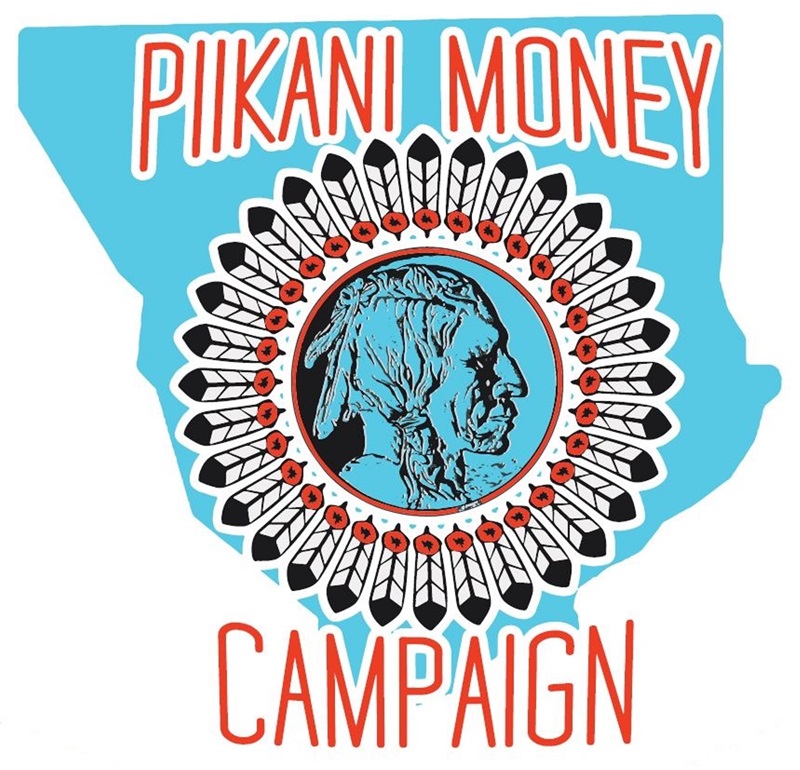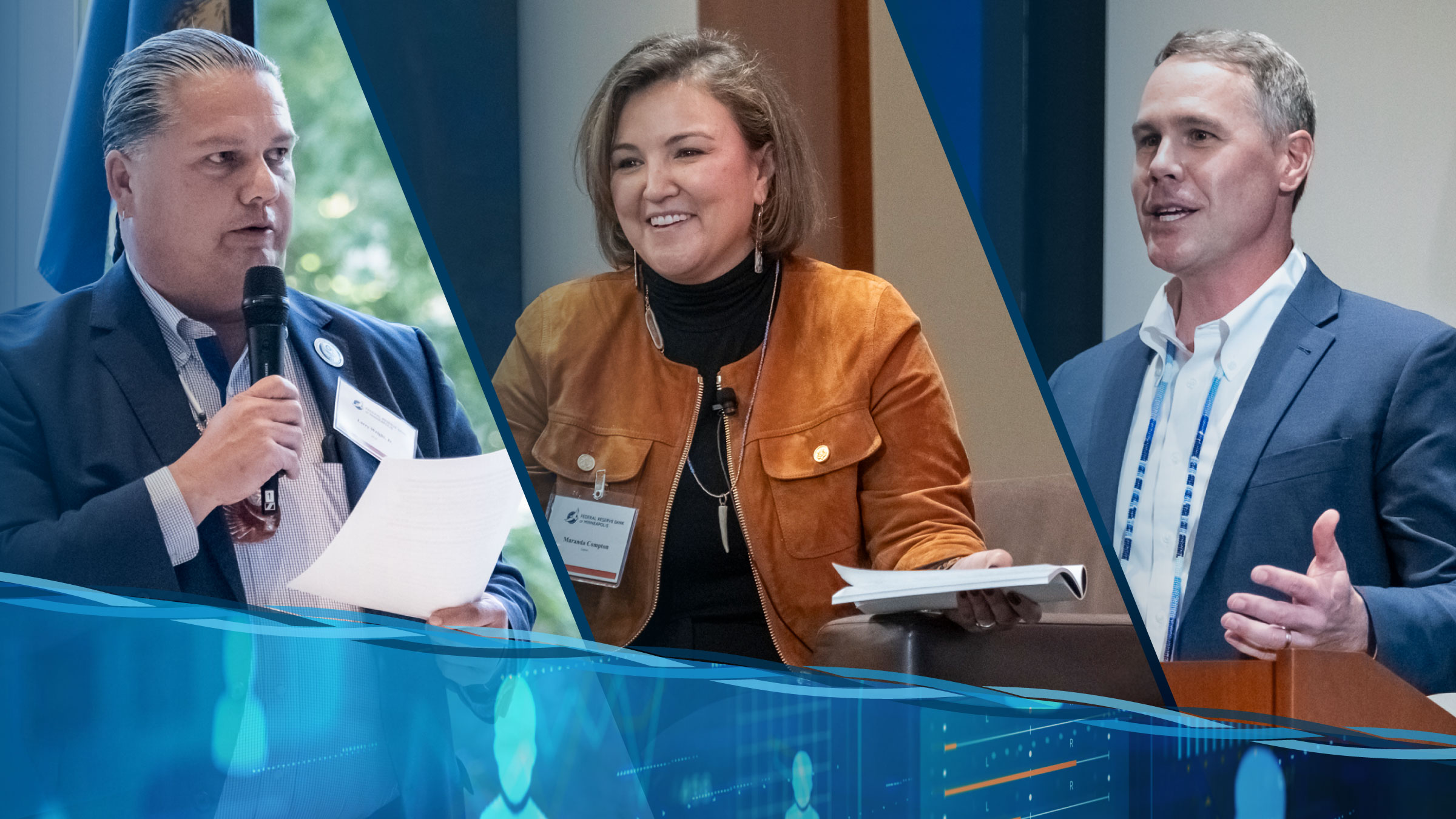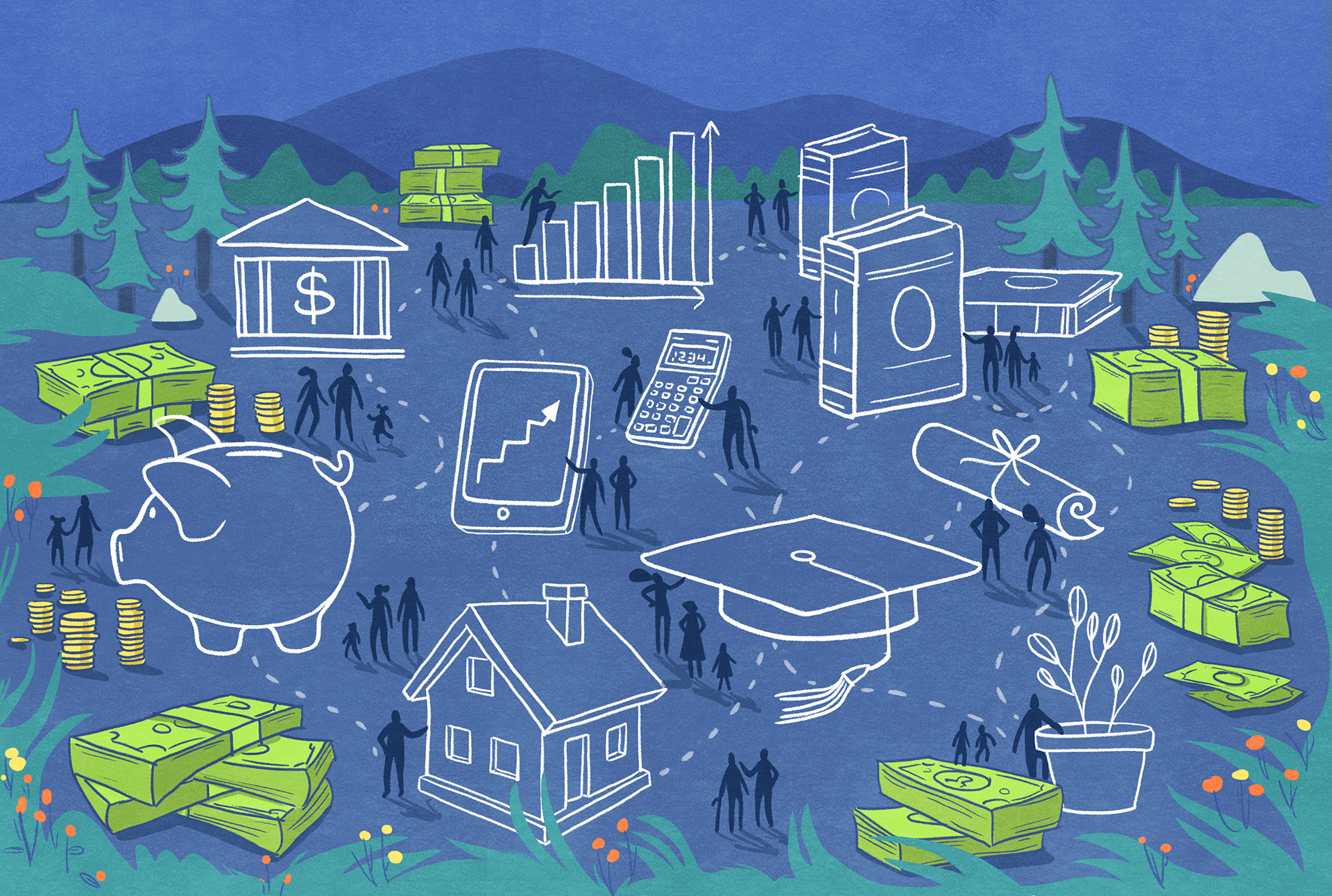
After hearing countless stories about the fly-by-night hucksters who offered mobile phone contracts at exorbitant rates, or the shady used-car salesmen who seemed to materialize out of nowhere to hawk their beat-up inventory on the outskirts of reservations, Angie Main knew the money that would soon flow onto the Blackfeet Reservation in northwestern Montana would draw similarly unscrupulous enterprises. As the executive director of Native American Community Development Corporation (NACDC), a financial services organization based on the Blackfeet Reservation, Main believed that the community needed to respond with a forceful educational campaign that would warn of the pitfalls of suddenly coming into money. She also wanted to highlight the many opportunities such a financial boon can bring.
“We needed to act quickly,” she said. “We heard about a lot of issues on other reservations with the sudden influx of money, so we knew we needed to mobilize the community to get this information out. Unfortunately, this type of campaign hadn’t really happened at other Montana reservations and a lot of money hasn’t been well-invested.”
The “sudden influx of money” Main referred to is connected to the Land Buy Back Program for Tribal Nations (LBBP), which was established as part of the settlement of Cobell v. Salazar, a class-action lawsuit over the federal government’s management of money accounts that receive revenue generated by the use of Native-owned parcels of reservation land. In Montana alone from 2012 through 2015, the U.S. Department of the Interior (DOI) mailed letters to more than 20,000 Native Americans who owned land on reservations in the state, offering to pay fair market value for their interests in the land.1 As a term of the LBBP, upon purchasing the land, DOI immediately transfers ownership to the respective tribal government, thus enabling tribes to acquire the land for commercial development or other purposes. Just over 10,000 landowners in Montana accepted the DOI’s offers and received anywhere from $75 to more than $1 million, with the average payment hovering around $28,000. With more than $276 million having been paid out for these interests,2 thousands of people faced decisions on what to do with their money. Should they invest it? Should they spend it?
NACDC is leading a coalition of community-oriented organizations that is addressing these questions through a comprehensive media effort called the Piikani Money campaign3 that aims to saturate the Blackfeet Reservation and reach the estimated 7,000 tribe members who are receiving buy back offers in late 2016. The campaign’s messages are based in large part on the experiences other tribes have gone through with the LBBP and other recent “sudden money” events. The coalition hopes the campaign can serve as a template for other tribes to adopt in preparing their own members for when the LBBP is administered on their reservations.
“We’re definitely hearing anecdotes where the outcomes for some people have been bad,” Main explained, “but we’re also hearing good stories, and the good stories are what we want. We want people to make choices that will benefit them for the long term.”
Sudden money, sudden considerations
The LBBP marks the latest in a series of sudden-money payouts that many Native Americans nationwide have navigated recently with either shrewd or short-sighted financial judgment. In other examples, such as the Keepseagle settlement,4 the federal government has delivered large lump-sum payments to individuals as compensation for damages. The LBBP has a different purpose, in that payment is made specifically to buy land interests, but in practice, it also results in individuals receiving some large lump-sum payments. While these sorts of payment events generate opportunities, such as the possibility of opening a new bank account, buying a home, or investing in a business, they also raise or expose issues, such as a need for financial education, a lack of access to banking institutions, and the arrival of the aforementioned opportunistic salespeople.
But the LBBP has unique issues associated with it that payment recipients haven’t had to consider before. For instance, are they better off selling for a lump sum today or retaining their land, which may generate income in the long term through leasing? If they sell, how will the receipt of cash for land affect their eligibility for federal and state public benefits, such as food stamps? The Piikani Money campaign is setting out to shed light on both these LBBP-specific questions and more universal sudden-money issues and opportunities.
Eight key messages
From its headquarters on the Blackfeet Reservation, NACDC, which is a certified community development financial institution (CDFI),5 has provided a range of financial services on and near American Indian reservations across Montana since its inception in 2000. But Main is quick to point out that the Piikani Money campaign is far too herculean a task for just one entity to administer. Instead, she described the need for resources from a wide variety of organizations to achieve media saturation in an area as vast as the Blackfeet Reservation, which at 1.5 million acres is larger than the states of Rhode Island and Delaware combined.
“This isn’t something that just one organization can do,” she said. “The whole community needs to be engaged. You need grassroots people helping grassroots people.”
Nineteen organizations make up the working group that is contributing resources to this campaign, which is being funded with $106,000 in grants from the Northwest Area Foundation, First Interstate Bancsystem Foundation, Native CDFI Network, and the DOI. (See the sidebar below for a full list of working group members.) Together, they have identified eight key messages to address specific sudden-money pitfalls that reservation residents of different ages and circumstances might encounter.
Avoid falling victim to predatory sellers of goods
The used car dealers and cell phone carriers mentioned previously are just two examples of potentially predatory sellers who set up shop on or near reservations that experience sudden-money events. Another example is people who sell used furniture. While it’s possible that these and other dealers may offer decent items at fair prices, the Piikani Money campaign hopes that LBBP payment recipients will carefully examine the products they are considering purchasing from these vendors.
According to Kimberly Boy, another matter is that many of these salespeople may not be allowed to do business on the reservation in the first place. Boy directs the Blackfeet Revenue Department, which oversees business licensing on the reservation and is a part of the Piikani Money campaign working group.
“We don’t know anything about them,” she said. “My department needs the cooperation of people and legitimate businesses in all corners of the reservation to let us know about possible violations.”
The campaign will draw attention to questionable sales practices and warn payment recipients to exercise caution when considering any purchases from fly-by-night sellers of goods and to report suspected unlicensed sales activity.
Prevent elder financial abuse
Members of the Piikani Money Awareness campaign working group reported hearing stories of family members, both immediate and extended, pressuring their relatives into cashing or spending their LBBP payments in ways that did not benefit the recipients. The victims of this coercion were often elders. Charlie Wolf Tail Jr., an inspector at Blackfeet Law Enforcement, said he currently investigates financial abuse of elders for payments unrelated to the LBBP, such as lease income and Social Security, but that he anticipates having to look into cases involving the LBBP as the payments start rolling in to the reservation.
“But the best solution to this problem is to prevent it from happening in the first place,” he said.
The Piikani Money campaign will draw attention to these coercive practices and will encourage elders, their caretakers, and financial institutions to be mindful of this form of pressure and to take actions to prevent it from happening. The campaign also hopes to reach the relatives who may be inclined to exert the pressure and dissuade them from engaging in such activity.
Purchase a home
The homeownership rate on the Blackfeet Reservation is 55.3 percent, more than 9 percent lower than the U.S. average and a full 14 percent lower than the ownership rate on all Indian Reservations nationwide.6 The LBBP money could provide sizable down payments for those LBBP recipients who seek to own a home and who have the demonstrated means to make regular mortgage payments.
One path to homeownership that may appeal to LBBP recipients is through the U.S. Department of Housing and Urban Development (HUD) Section 184 Indian Home Loan Guarantee Program. Available only to Alaska Natives or enrolled members of a federally recognized American Indian tribe, this program provides financing opportunities for people who seek to purchase or refinance a home. Besides its low down payment requirement of 2.25 percent, what makes this program particularly appealing for eligible borrowers is that it will provide financing for home purchasing or refinancing on reservation land that is owned by individuals or tribes but held in trust by the federal government. On many reservations, trust land accounts for a large portion of the total land area. The trust classification can be an obstacle to obtaining financing, because federal law prohibits banks from claiming trust land as collateral.
“A lot of banks won’t even touch a loan application for a home on a reservation,” said Paula Crawford, a certified HUD 184 mortgage lender with the Bank of England, a community bank headquartered in England, Arkansas. “But this program will help,” Crawford said. “It also is available for homes off the reservation. If a Blackfeet member said, ‘You know, I want to move to another state and buy a house there,’ they can go ahead and do that.”
Much like traditional lenders, the program requires borrowers to be in good standing with creditors and on sound financial footing. NACDC works with prospective home buyers to clean up their credit reports, pay off outstanding debts, and fill out the HUD 184 application. The organization then refers applicants to underwriters like Crawford.
“The Land Buy Back payments are a really good opportunity for some people to pay off debts, repair their credit, and have the down payment necessary for a home,” said Crawford.
The campaign will host events to discuss the benefits of homeownership and will connect those interested in the HUD 184 purchase option to organizations that can provide further help, including NACDC and the Blackfeet Housing Authority.
Start or expand a business or agricultural operation
A rancher looking to buy a new tractor or a restaurateur seeking to build an addition to his or her eatery may find an LBBP check just what is needed. The same can be true of a person seeking to create a new business. With access to capital often limited on reservations because of banks’ inability to secure trust land as collateral, the LBBP payments offer entrepreneurs an opportunity to start or expand an enterprise.
“We really want people who receive Land Buy Back payments to make investments that benefit them long-term,” said NACDC’s Main. “Investing in a business can do that.”
As a Native CDFI, NACDC offers a suite of business services to assist active or prospective entrepreneurs, from business plan development and financial projections to small business loans. The organization also works with people who wish to seek funding through the Montana Department of Commerce’s Indian Equity Fund Small Business Grant program, in which applicants compete for $14,000 grants to open or expand a business. These grants must be matched with cash (such as from an LBBP payment), loans, inventory, or equipment owned by the applicant. To date, NACDC has helped three businesses receive $14,000 grants and helped one business receive a $7,000 one.
The technical assistance offered by NACDC is just one example of the resources that the Piikani Money campaign will highlight to LBBP recipients who are interested in expanding or starting a business. The campaign will also work with other key partners who can help entrepreneurs, including the Indian Land Tenure Foundation and USDA Rural Development.
Become financially savvy and “money-ready”
Challenges with navigating the world of personal finance are by no means specific to Native Americans, but the imminence of LBBP payments increases the urgency of reaching potential recipients and offering guidance to those who aren’t knowledgeable about financial matters. Enter NACDC. In addition to helping entrepreneurs with a range of business services, the organization helps individuals improve their understanding of a range of personal finance and credit topics.
At personal finance workshops the Piikani Money campaign plans to hold monthly throughout the reservation, NACDC and a few other organizational partners will introduce participants to budgeting, banking, fraud awareness, credit management, the importance of having credit, and the essentials of reading and checking credit reports. NACDC has a track record of working with people on these topics. In 2015, the organization taught financial literacy and credit building classes to more than 200 people.
“We’d really like people to be financially astute about having checking and savings accounts and investing money with their financial institution so that it lasts a lot longer,” said Main.
Become “banked”
Main’s desire for people to have access to financial institutions begs the question: What happens when someone receives a check for a large sum but doesn’t have a bank account to deposit it into? For a lot of people in Indian Country who remain unbanked or underbanked, the unfortunate answer is to cash it at a check-cashing outlet and then stuff it, literally, under the mattress.
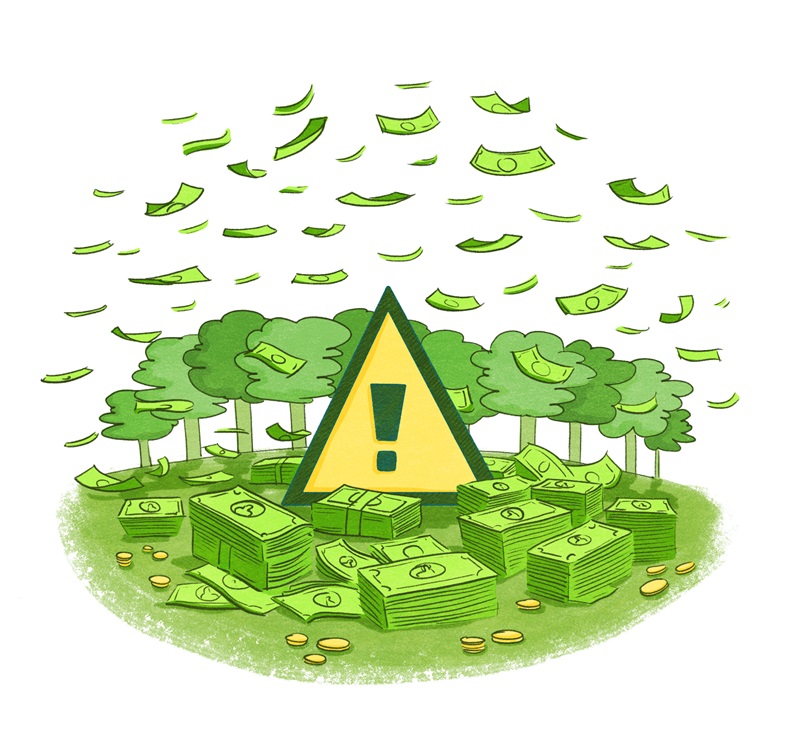
“We’ve seen many people then spend their money on short-term wants and not long-term needs, which has created even worse situations for some recipients. We wanted to provide resources for people to use to make the best decisions possible,” said Johnnie McClusky, a community development officer at First Interstate Bank, whose organization is part of the Piikani Money campaign working group.
As a member of the Crow Nation, which went through the LBBP in 2014, McClusky witnessed firsthand the pitfalls that payment recipients fell into and the negative consequences of not having banking resources or know-how. He and First Interstate Bank are happy to join the Piikani Money campaign’s personal finance workshops to share information about the benefits of becoming banked. During the portions of the workshops that cover banking, attendees will learn not just about different financial products, like checking and savings accounts, but about the process of opening a bank account, including what types of forms need to be filled out and which types of identification are required. In fact, at some of the events, attendees will be able to apply to open accounts on-site, provided they have the appropriate documentation and the meeting space has Internet connectivity, which the campaign will factor in when organizing the events.
“If we can’t sign people up for a bank account at the meeting location, we can at least start the process there and finish at our offices,” McClusky said.
Understand the impact of LBBP payments on your lease income and public benefits
Navigating the labyrinthine eligibility requirements of public benefits can be a daunting task, especially when sudden money is thrown into the mix. LBBP payments can add even more complexity because they originated as a transfer of assets from land to cash, not an increase in net worth. But for many LBBP payment recipients, the public benefits—such as Supplemental Nutrition Assistance Program (SNAP), or food stamps; Temporary Assistance for Needy Families (TANF); and Medicaid—are a crucial source of financial assistance to help with day-to-day living.
According to Teri McDonald, regional field manager at the Montana Department of Public Health and Human Services, eligibility calculations for the SNAP and TANF programs will exclude the money in the month of receipt and for 12 months from the date of receipt, if retained. After 12 months from the date of receipt, the money may be factored into eligibility calculations. Medicaid eligibility calculations will treat LBBP payments similarly but instead of factoring in the payment after 12 months, the program will continue to exclude the money as a resource as long as the source can be identified as the LBBP.
“That means if a person buys something with the money, like a car or some property, and we can trace that purchase to the LBBP money, it won’t be counted against them for Medicaid,” she explained.
Another consideration landowners must weigh is lease income. Should they decide to sell their interests under the terms of the LBBP, they will no longer receive any revenue associated with lease activities on their land. This is a ramification that may not be fully clear to everyone who receives sale offers. The Piikani Money campaign will host workshops that drive home this point and will encourage those who do sell their land to reach out to their case workers at the Office of Public Assistance for Glacier County to help them determine their eligibility for a variety of assistance programs.
Cultivate financially savvy youth
The LBBP payments offer a unique opportunity to engage Native youth on navigating many of the financial decisions that they will inevitably face as they reach adulthood. What is the difference between needs and wants? What are some of the immediate and long-term goals of our family? And how can we best use LBBP payments to meet these goals? Discussing these and other questions will help Native youth better understand the often challenging world of personal finances, particularly in geographic settings with limited banking infrastructure.
According to Megan Vincent, the Family and Consumer Sciences Education Specialist at the Montana Office of Public Instruction, leaving children out of a community-wide event like the LBBP carries the risk of missing an opportunity to pass on important lessons.
“This is a great teachable moment for kids across the reservation,” she said. “Even though they themselves aren’t going to receive any money, they’re going to see it, they’re going to experience it, and they’re going to ask questions. And if they had some information at school, for instance, or even a conversation at home, they’d at least have a small knowledge base from which to draw, which is better than nothing.”
The Piikani Money campaign will work with a handful of partners, including the National Jump$tart Coalition for Personal Financial Literacy and the Montana Office of Public Instruction, to develop messaging and resources for youth to take advantage of the LBBP payments to learn more about sound money management practices.
Saturating and surveying the reservation
The Piikani Money campaign is using a variety of media channels to deliver its eight core campaign messages. The goal is to saturate the reservation with both electronic and paper-based media so that its nearly 11,000 residents inevitably come across and absorb the messages being conveyed. The delivery channels include:
- Posters, which are hung in tribal departments, schools, gas stations, grocery stores, and other locations that residents congregate at or frequent.
- Resource brochures, which campaign organizers plan to mail to all LBBP offer recipients and make available at many of the places where the posters are on display. The pamphlets will also be tucked under windshield wipers throughout the reservation.
- Billboards bearing several of the campaign’s core messages were launched in mid-November in the Browning, Montana, area of the reservation.
- Public service announcements, which are being delivered through newspapers and local television and radio stations. For example, Thunder Radio in Browning agreed to run approximately 1,100 campaign ads over a four-month period and air a weekly, 30-minute Piikani Money Campaign show.
- Online and social media, including a Facebook page dedicated to the campaign, a Twitter account, and a website (www.piikanimoney.org).
- Workshops and outreach meetings on banking fundamentals, homeownership (as mentioned previously), and other topics related to the campaign’s messages will be offered, in addition to payment-program information sessions organized by representatives of the LBBP.
- Community events, including powwows and other tribal convenings.
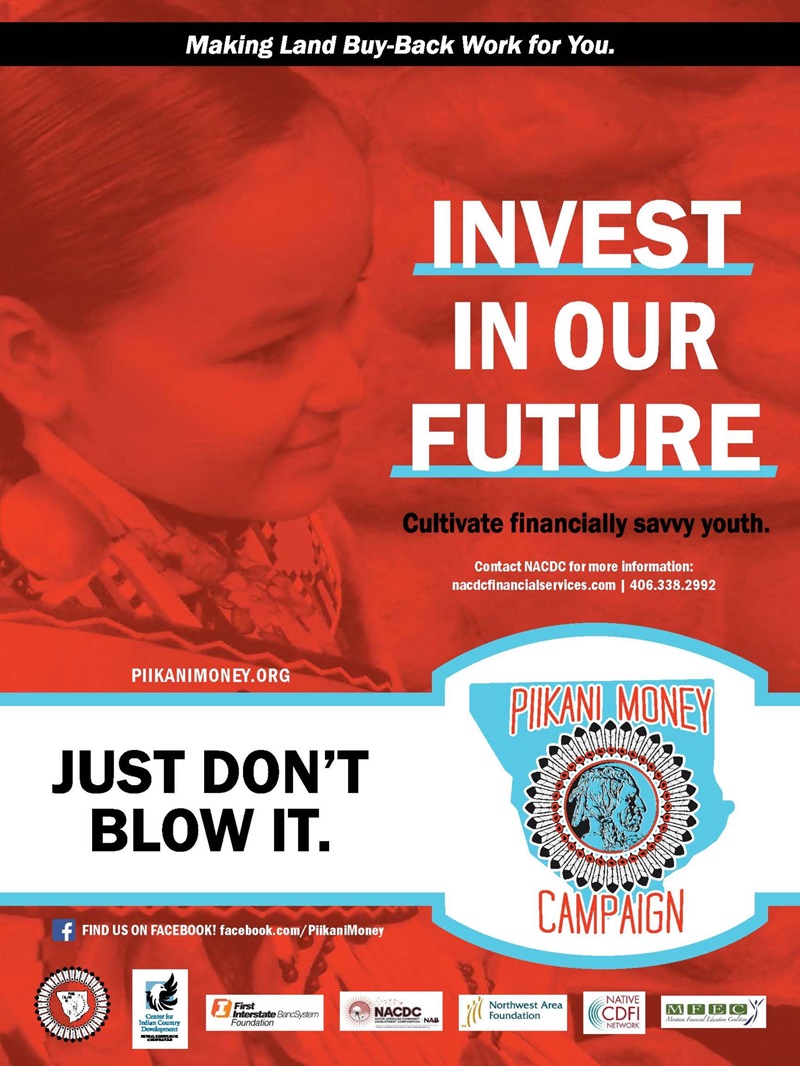
The Piikani Money campaign is conducting an evaluation of its outreach efforts to learn about what worked and what didn’t. The campaign distributed a survey to tribal members before offer letters were mailed and plans to do so again at the conclusion of LBBP activities on the reservation and, finally, six months after that. The results of these surveys will help the campaign organizers better understand how people planned to use the payments, what they ultimately did with the payments, and any associated outcomes. The campaign will also survey workshop attendees to determine if they learned useful information at the sessions. The outcomes of these evaluative measures will then be summarized in a series of reports that will be available to others interested in organizing a similar money awareness campaign.
As the year drew to a close and people saw campaign posters and took in PSAs, Main was hard at work organizing community workshops and outreach meetings across the reservation. She’s confident the events can reach many, if not most, of the reservation’s residents. And she’s hopeful that residents will heed the campaign’s messages.
Main is also hopeful that other communities, particularly (but not exclusively) Native communities, will replicate this type of awareness campaign that stresses long-term investment over short-term fixes—especially when it comes to receiving sudden money.
McClusky, of First Interstate Bank, shares her optimism.
“We’re realistic on what we can achieve,” he said, “but we want this to be a model so we can touch as many people as we can. We think we can do that with this campaign.”
Endnotes
1 For more on the history and purpose of the LBBP, see “Maximizing the tribal land buy-back program: How priority lists can influence what’s purchased” in the July 2014 issue of Community Dividend.
2 Department of the Interior 2015 Status Report of the Land Buy-Back Program for Tribal Nations, page 19.
3 The campaign is named after the Pikuni tribe, one of the three tribes—along with the Kainai and Siksika—that make up the Blackfeet Confederacy. The alternate spelling “Piikani” is used in the campaign’s logos, slogans, and other materials.
4 Keepseagle v. Vilsack is a class-action lawsuit that claimed the federal government discriminated against Native Americans by denying them equal access to credit from the U.S. Department of Agriculture’s Farm Loan Program. The suit was settled in 2011 for $760 million. Additional information.
5 Community development financial institutions (CDFIs) are specialized entities that provide financial products and services, such as small business loans and technical assistance, in markets not fully served by traditional financial institutions. For more information, visit our CDFI Resources web page.
6 This information comes from the Reservation Profiles web page of the Center for Indian Country Development, which is housed at the Federal Reserve Bank of Minneapolis. The page presents data from the 78 largest federally recognized tribes.



